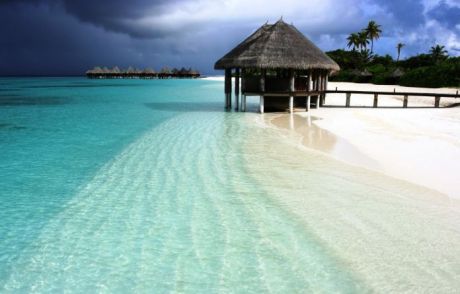Deepwater Drilling Moratorium Version 2.0 July 14, 2010
Posted by Jamie Friedland in Offshore Drilling, Politics.Tags: Bob Graham, BP, Deepwater Horizon, Drilling Moratorium, Exxon, Gulf of Mexico, Ken Salazar, Martin Feldman, Offshore Drilling, Oil Spill, Rex Tillerson
4 comments
Last month, as most of you know, the Obama administration’s first deepwater drilling moratorium in response to the ongoing BP oil spill was overturned in a logically unsound and ostensibly political decision by U.S. District Judge Martin Feldman.
This week, Secretary of the Interior Ken Salazar announced a second moratorium on new deepwater drilling in the Gulf of Mexico through November 30th. It is designed to address the “concerns” raised by Judge Feldman (download here).
I have said this before, but it must be repeated in any discussion of a deepwater drilling moratorium:
-Fact: We do not yet know what caused the blowout that sank the Deepwater Horizon rig.
-Fact: We do not have adequate prevention or containment methods for a deepwater blowout, so a massive oil spill is guaranteed if a blowout occurs.
-Fact: A massive oil spill is unacceptably destructive.
-Conclusion: Deepwater drilling must be halted AT LEAST until we know how to prevent and/or recover from deepwater blowouts.
This, in and of itself, ought to sufficiently justify a moratorium. However, without addressing this issue, Judge Feldman somehow found the following items troubling enough to take the extreme measure of overturning the moratorium:
The original moratorium alluded to but did not explicitly describe the devastation caused by deepwater blowouts. Judge Feldman did not think the moratorium followed logically from the 30-day safety report on which it was based.
The original moratorium covered oil rigs drilling in more than 500 feet of water. Judge Feldman felt this depth-based cutoff was arbitrary (it’s not – in Feldman’s own words, it is “undisputed” that to drill beneath that depth, floating rigs are required to conduct the more dangerous, deepwater drilling).
The oil industry has also cited a bogus job-loss argument that I refuted in my original defense of such a drilling moratorium. Yes, temporarily halting drilling does temporary reduce the number of drilling jobs available. But when one considers the job loss beyond the oil industry as a result of oil spills (in nature-driven sectors such as fishing and tourism), it is clear that oil spills destroy far more jobs than a temporary halt in drilling.
This new moratorium addresses Judge Feldman’s stated concerns.
First, it essentially makes the case I have made above: it cites the oil industry’s inability to identify the cause of and thus prevent another blowout of this type. It catalogues the utter inadequacy of every oil company’s cleanup and containment procedures in the event of a deepwater blowout. It spells out what the rest of us already know.
Second, it removes the depth-based determination of which wells must halt their drilling. Instead, this moratorium applies only to oil rigs “using subsea blowout preventers (BOPs) or surface BOPs on a floating facility” regardless of depth.
In regard to the scope of the moratorium, this different language appears mainly to address Feldman’s flimsy yet prohibitive criticisms of the original moratorium; it seems that the moratorium will still apply to the same 30 or so deepwater rigs currently in the Gulf.
It is true that BP was operating its rigs more recklessly than others in the oil industry. Interestingly enough, one oil industry group (that usually spends its resources on important things like funding climate denial) has turned its guns inward on BP as the rest of the industry tries to distance itself from BP. They released the graphic below detailing BP’s shortcomings:

BP was extra reckless with the Deepwater Horizon well, but deepwater drilling has intrinsic risks that cannot be fully negated. Click for larger.
But even the oil industry conceded during Congressional testimony that the risks of deepwater drilling cannot be avoided:
“When these things happen, we are not very well equipped to deal with them, and that’s why the emphasis is always on preventing these things from occurring.” -Exxon CEO Rex Tillerson
For the first time in my life, I agree with Rex; that, in one sentence, explains why the drilling moratorium is in place.
Some members of the presidential commission investigating the oil spill have concerns about the economic impacts of the moratorium and have changed their minds to oppose it. However, until I hear a response to the three facts and conclusion laid out at the beginning of this post, I will support a moratorium.
Commission co-chairman Bob Graham compared the situation to Boeing’s treatment of its fleet when a defect was discovered in the cockpit glass of 1,200 planes. “They didn’t wait until all 1,200 had been examined to release the first one,” he said. He feels that because there are only 36 or so rigs in question, we should simply be able to inspect each one, and allow them to continue drilling if and as soon as they pass inspection.
This is not an analogous situation. The Boeing technicians knew what they were looking for; we don’t. Until you have diagnosed a problem, you cannot fix it. An inconclusive doctor’s visit does not ipso facto cure an undiagnosed disease.
Until we know what happened, a drilling moratorium is the right move. That’s why the European Union’s top energy minister has called for a similar moratorium on deepwater drilling as well – pending the results of an investigation of the Deepwater Horizon accident.
We cannot skimp on safety precautions just because the oil industry has a stranglehold on the Gulf economy. Whatever economic losses may accompany a halt in drilling are still BP’s fault. If BP is compensating fishermen who not work as a result of their recklessness, they should be compensating their own employees who cannot work because of their recklessness.
The oil industry is using its drilling jobs as leverage to threaten us into prematurely lifting our moratorium. It is perverse to cave to their demands before we have even stopped this ongoing catastrophe.
Check out this post at Grist that gives some scale to the cleanup effort.
Conceivable and Precedented May 4, 2010
Posted by Jamie Friedland in Offshore Drilling, Politics.Tags: 2010 Oil Spill, Bahia de Compeche, blowout, Blowout Preventer, BP, Deepwater Horizon, Exxon, Exxon Valdez, Gulf of Mexico, Halliburton, Montara, Oil, Oil Spill
7 comments
***For newcomers: I have created a page of questions and answers about offshore drilling and this oil spill here.***
BP did not build containment devices before the disaster because it “seemed inconceivable” that the blowout preventer would fail.
– BP spokesman Steve Rinehart
“The sort of occurrence that we’ve seen on the Deepwater Horizon is clearly unprecedented.”
– BP spokesman David Nicholas
These are lies. Both of them. And I can prove it:
Blowouts aren’t inconceivable, they are actually fairly common.
I have already explained in detail how blowout preventers (the last line of defense against catastrophes like this) are known and even quantifiably proven to be woefully inadequate last lines of defense against this sort of disaster. A U.S. government report found 117 blowout preventer failures in just a 2 year period! And the oil industry knew this; each data point on that report’s survey was an actual blowout on an oil company’s offshore rig!
It is true that not every blowout leads to a catastrophic oil spill like this. Yet it doesn’t take an imagination to plot out a disaster scenario when highly pressurized, obviously flammable fuels come hurtling out of the ground with explosive force towards an oil rig. And the second lie is even more damning.
This “sort of occurrence” (the euphemism of the day) is not at all unprecedented: a similar blowout, oil rig fire and massive oil spill occurred off the northern coast of Western Australia just 8 MONTHS AGO. I want to swear here so badly.
Before I get into the more recent spill, I have to say that there have been plenty of significant offshore blowouts and oil spills (list here). The worst in history started on June 3, 1979. An exploratory well in the Bahia de Campeche (600 miles south of Texas) experienced a blow out. The oil and gas ignited, lighting the platform and soon causing it to sink. Unfortunately, that platform fell on top of the wellhead, severely hindering efforts to activate the failed blowout preventer (I know what you’re thinking: “failed blowout preventer? Those are the last line of defense! They never fail!” If you don’t understand that sarcasm yet, please read this).
The blowout preventer was ultimately closed, but it had to actually be reopened to prevent its complete destruction when some valves began to rupture. Between 10,000 and 30,000 barrels of oil gushed from that well every day for nearly 10 months until they finally capped the well on March 23 of the next year. 3.5 million barrels (147 million gallons) of oil were released.
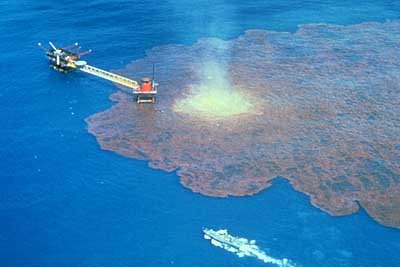
As BP well knows, the precedent for this type of spill is well established. This oil well gushed for nearly 10 months from 1979-1980.
There have been many more blowouts since then, but lets jump to the most recent: a blowout on the West Atlas rig in the East Timor Sea created a gusher on August 21 just last year. Shockingly enough, a fire sparked. The spill continued for 74 days through November while it took crews 4 attempts to drill a relief well like they are now trying to do in the Gulf.
The “Montara” oil spill, as it was called, released an estimated 9 million gallons (Exxon Valdez = ~12 million gallons) into one of the world’s most pristine oceanic areas, but went largely unreported because of its remoteness.
The East Timor Sea was home to some of the world’s most iconic and endangered species including 15 species of whales and dolphins, at least 30 species of sea birds, and five species of sea turtles (it’s been an especially bad year for them). Furthermore, 10,000 communities and 7,000 fishermen rely on the area for their survival. Residents of villages in the region report skin problems and diarrhea from eating contaminated seafood. Fish catches have been reduced by 80%.
The Montara spill and the current crisis have a lot in common. The rigs involved were 2- and 3-years old, state-of-the art and reportedly safe. In both cases, early flow-rates were obviously understated. Both occurred in areas of vital ecological and even economic importance.
Yet all indications suggest that the Gulf spill will be far, far worse. The West Atlas rig didn’t sink. The flow rate in the Gulf is already much higher. And the Montara spill occurred in only 600 feet of water. The Deepwater Horizon rig spill is under more than a mile of water, and the oil deposit is more than twice as deep underground.
Recall that is took Australian crews 4 tries to drill a relief well. In case it hasn’t been made clear, that process involves drilling down to depth and then a long distance horizontally towards the first, leaking well. The goal of this extensive drilling is to locate and bore into the original pipeline, which is less than a foot across (at least for the East Timor pipe). So in the Gulf, crews will have to drill through 18,000 ft of sea floor beneath more than 5,000 of water. Then they have to drill laterally to find the pipe and pierce it from miles away. There is a reason this project is expected to take literally months, with barrels and barrels of oil leaking the whole time.
The biggest similarity between the two, however, is that the causes may have been identical. I wrote yesterday about Halliburton’s involvement in the “cementing” process for the Deepwater Horizon rig, and how experts believe that cracks in a faulty cementing job could be responsible for the current disaster in the Gulf. Interestingly enough, although the inquiry into the East Timor spill is not complete, investigators have identical suspicions about the cause of that spill. And I bet you can guess who was working on the cementing for that rig too – Halliburton.
Halliburton is still looking into the Montara spill. If we get the Gulf spill plugged, I would imagine they’ll start looking into this as well (although they won’t have to bother – we surely will). As Charlie Cray put it, “It’s starting to look like the only thing Halliburton can cap tightly is its own mouth.”
To be fair, BP’s lies are consistent with their actions. While they actively fought safety regulations that might have prevented this disaster, internal documentation suggests that their surprise at this incident is genuine. Stultifying and much closer to the actual meaning of inconceivable, but genuine.
In their 2009 exploration plan and Environment Impact Statement (EIS) for this well, BP wrote that it was virtually impossible for a major oil spill to occur that would cause serious damage to beaches, fish and mammals. They write repeatedly that it is “unlikely that an accidental surface or subsurface oil spill would occur from the proposed activities.” You know, because oil spills are virtually unheard of.
Even if a spill did occur, “due to the distance to shore (48 miles) and the response capabilities that would be implemented, no significant adverse impacts are expected.” And that’s it. Having said that, they made no plans about how they would respond if there was an “inconceivable” oil spill. Because what are the chances, really?
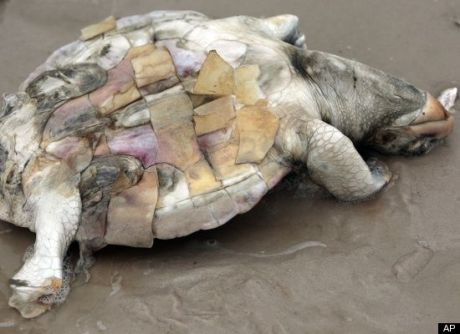
"Don't worry about our back-up plan. We don't have one. The rig will be 50 mi offshore, what could go wrong?"
That such a ridiculous EIS was accepted is further proof (not that any was needed after last year’s sex and drugs story broke) that industry is way too close with government regulators. No reasonable, independent citizen of this country would approve a drilling application that, instead of having a worst-case scenario response plan, simply said “that’s really unlikely, and we don’t think it will happen.” Incredible.
2010 Oil Spill Answers (Pt. 2) May 4, 2010
Posted by Jamie Friedland in Offshore Drilling, Politics.Tags: BP, Exxon, Exxon Valdez, fishermen, Gulf of Mexico, Halliburton, Offshore Drilling, Oil, Oil Spill, Oil Spill 2010, wildlife
4 comments
***I have added a new page to this site to let you more easily find the answers to your oil spill questions. It is the new “2010 oil spill/offshore drilling answers” tab next to the “about me” at the top of each page, or you can click here.***
In a previous post, I have addressed the following questions:
- What was the oil rig doing?
- What caused the explosion?
- How much oil is spilling?
- Where is the oil spilling from?
- Can we stop the spill? How?
- Could the spill get any worse?
I also answered why BP is responsible for this spill/explained what blowout preventers are, and, just a few weeks before this all began, I wrote a detailed post explaining why offshore drilling is dangerous and not an energy solution.
In this post, I will address these questions:
- What does this mean for people who live along the Gulf?
- What does this mean for the wildlife in the Gulf?
- How does this compare to the Exxon Valdez spill?
- How is Halliburton involved?
Also, the New York Times has a well-done, simple day-by-day map tracking the spill here.
What does this spill mean for the people who live along the Gulf?
This ongoing spill is going to prove catastrophic for many people around the Gulf. Not in loss of life, but through loss of livelihood. It has been estimated that the Gulf of Mexico is responsible for $31.8 billion annually in sustainable activities such as fishing (commercial and recreational) and tourism. As we have now seen, whatever money there is to be made from offshore drilling there, it completely jeopardizes the rest of the Gulf’s economic activities.
Unlike oil profits, which are extractive, one-time transactions that only enrich giant oil companies and their shareholders, the income from these other activities is sustainable and dispersed among millions of Gulf coast residents. It is how thousands upon thousands of fishermen and shrimpers and tourism operators have supported their families for decades and were planning to do so this year and into the future.
The iconic Exxon Valdez spill in Alaska offers some insight about what to expect for the Gulf region. 21 years after that spill, crude oil still remains on or just under the surface of some of the regions beaches. Fishing was out of the question for years. Indeed, many Gulf fishermen have already brought in their last harvest for some time to come: fishing has already been suspended in large parts of the Gulf. If fishery populations are decimated, those men and women might not be able to go to work for many years after we get the oil cleaned up.
That is what happened in Alaska after Exxon Valdez. Unable to work, fishermen remained at home as their bank accounts and family lives became depleted. Alcoholism, bankruptcy, suicide, domestic violence, and divorce rates rose significantly in the area. Men who have fished their entire lives and know how to do nothing else were suddenly powerless to provide for their families. And for what?
What does this spill mean for the wildlife in the Gulf?
The Exxon Valdez Oil Spill Trustee council estimated 250,000 seabirds, 2,800 sea otters, 300 harbor seals, 250 bald eagles, up to 22 killer whales died along with billions of salmon and herring eggs. Some species have recovered, some never did.
But the Gulf is not Alaska. Louisiana is the 2nd largest seafood-producing state in the country (after Alaska). In fact, much of the seafood served around the country, even in crab shacks along the Chesapeake Bay(!), is actually flown in from the Gulf. That will now stop. When such fragile ecosystems are disrupted so drastically, the effects can be very long-term.
The wetlands along the Gulf of Mexico, particularly in Louisiana, are not wildlife sanctuaries simply because they are a beautiful part of our country’s natural heritage. Many oceanic fish lay their eggs in the protection of those marshes. Crabs, shrimp, and oysters are completely dependent upon those coastal areas. If toxic oil reaches them, we will likely see population crashes across the spectrum of marine wildlife.
But the oil has devastating effects in the open water as well. The only living coral reef system in the continental U.S., fragilely situated along the Florida Keys, is imperiled. This spill spells doom for everything from sport-fishers’ Atlantic tarpon to the already decimated bluefin tuna population, shrimp, endangered sea turtles, essentially all Gulf commercial fisheries, migrating sea birds and marine mammals.
For a more detailed look at the threat to the region’s wildlife, I suggest Dr. Sally Kneidel’s May 2 post.
How does this compare to the Exxon Valdez spill?
Regardless of what happens in the next few days or weeks, Exxon Valdez and Horizon Deepwater will be the two worst oil spills in American history. As you may recall, the Exxon Valdez was an oil tanker that ran aground in Alaska, spilling nearly 11 million gallons of oil into the Prince Williams Sound. That accident was caused by the negligence of a captain who was accused of being drunk at the time. That is different from this situation.
However, the Valdez spill was also caused by a giant oil company’s refusal to adopt common-sense safety precautions that would cost a little extra money up front (although save the company literally billions by preventing oil spills), and in that respect, these two spills are very similar. Exxon took the inexplicable position of refusing to use double-hulled tankers even as the rest of the oil companies adopted the practice as commonplace and even demanded by law around the world.
More about that situation and Exxon Valdez in general here.
What makes this spill so terrifying is that its not really a spill. It is what’s known as a “blowout,” “gusher,” or sometimes a “wild well”: an uncapped well connected an oil reservoir under high pressure. Because of that pressure, oil will flow, sometimes violently, from the well as long as it remains uncapped. This brings us to the crucial difference between Exxon Valdez and this situation.
The Exxon Valdez was an oil tanker with a capacity of 1.48 million barrels of oil. Don’t get me wrong, that is a lot of oil and capable of immense ecological damage, but there was a finite amount of oil that could be spilled from that tanker. It is estimated that about 260,000 barrels spilled from the tanker. But in the Gulf, we are dealing with an ongoing spill from an entire reservoir.
Instead of the Exxon Valdez’s 1.5 million barrels, the reservoir in question is estimated to hold 100 million barrels of oil (4,200,000,000 gallons). These will continue to leak until the well is successfully plugged. And there is legitimate concern that the rate of the leak could increase by a full order of magnitude such that as much oil as spilled from the Exxon Valdez would defile the Gulf every 2 days. That is not a typo.
How is Halliburton involved?
Halliburton is the world’s second largest oilfield services corporation. Outside of the drilling industry, it is most [in]famous for being the subject of several controversies involving the 2003 Iraq War and former Vice President Dick Cheney’s lingering involvement with the corporation following his retirement as Chairman and CEO to run in the 2000 election.
Halliburton has confirmed that it provided numerous services for the Deepwater Horizon rig. Among them was a process known as “cementing”: plugging holes in the pipeline with cement. This practice is supposed to prevent oil and natural gas from escaping from the well at the drill site (except through the pipe).
The investigations about what happened and who is at fault have only just begun and obviously are secondary concerns after stopping this disaster, but experts are already suggesting that a faulty cementing job by Halliburton could be the culprit. Faulty cementing has already been identified as a major cause of blowouts, and Halliburton has actually been implicated in the massive blowout off the coast of Australia last year! I will be writing more about this and other blowouts later this week. It is no surprise, then, that the company is already charged in some of the first law suits that have been filed so far.
A government report released in 2007 examined 39 rig blowouts in the Gulf of Mexico between 1992 and 2006. Improper cementing was determined to be a contributing factor in 18 of the incidents.
More updates and answers to come.
Why BP Deserves This May 3, 2010
Posted by Jamie Friedland in Offshore Drilling, Politics.Tags: Blowout Preventer, BOP, BP, Exxon, Exxon Valdez, Gulf of Mexico, Horizon Deepwater, Offshore Drilling, Oil, Oil Rig, Oil Spill, Oil Spill 2010, Tony Hayward
3 comments
***UPDATE: I have added a new page to this site to let you more easily find the answers to your oil spill questions. It is the new “2010 oil spill/offshore drilling answers” tab next to the “about me” at the top of each page, or you can click here.***
As BP’s stock rightfully plummeted on account of the horrendous disaster unfolding in the Gulf of Mexico, CEO Tony Hayward said to fellow executives, “What the hell did we do to deserve this?”
Since I have been taking the time to answer other questions about the oil spill here, I think I can spare a few minutes to answer dear Tony’s question as well.
Some might call the blowout that engulfed the Horizon Deepwater rig in flames, killed 11 workers, injured 17 more, and unleashed an entire oil reservoir on the Gulf coast, an act of god. Instead, I would counter that this is one of the real, now realized, risks of offshore drilling. But can BP truly be blamed for this catastrophe? In short, yes. On account of simple, deliberate negligence.
And it could just as easy have happened, or even happen AGAIN, to any of the big oil companies operating off of our shores right now.
If you have been following the spill coverage, you have probably heard about the “blowout preventer.” Blowout preventers (BOPs) are giant valve structures that can weigh 500,000 lbs and stand 50 feet tall. They are bolted in position on the sea floor at the wellhead, where the “riser” pipe to the rig above penetrates the earth en route to the oil reservoir below. They are full of redundant systems and backups because they are the ultimate failsafe to prevent disasters like the one we are now experiencing. In the event of a high-pressure situation, they are designed to clamp shut, closing the well to prevent spills and protecting the oil rig above. The Deepwater Horizon’s BOP failed.
As this story spreads, the oil industry will paint BOP failures as rare. They are not. The unclassified version of a 1999 government report found that BOP failures are actually fairly common. There were a staggering 117 BOP failures in just a 2-year period on the outer continental shelf of the U.S. alone. Think about that: the last line of defense for American coasts failed more than 58 times per year. A 2007 paper from the Minerals Management Service said that there were 39 actual blowouts (not just BOP failures) between 1992 and 2007. Add another one to both of those tallies.
Knowing that this final failsafe mechanism was imperfect and the multibillion dollar costs of an oil spill, you’d think that oil companies would do everything they could to prevent blowouts. Instead, Big Oil used their millions of dollars in annual lobbying to FIGHT blowout preventer requirements.
BOPs operate on a type of dead-man switch. The default position is closed. The valve is only supposed to remain open if it receives a continuous signal from the rig above. If that signal stops for any reason, the valves are supposed to slam shut. Simple enough in theory, but as we now know, that doesn’t always happen.
Major oil-producing countries like Brazil and Norway responded to this concern 17 years ago in 1993. BOPs on offshore wells there are required to have acoustic triggers, which can be used to remotely activate the BOP if everything else has failed. The U.S. considered requiring remote-controlled shut-off mechanisms several years ago, but the oil industry successfully lobbied against the restriction, citing excessive costs.
Let’s examine their math, shall we? Acoustic triggers cost an additional $500,000 per rig. That’s the cost. Now let’s look at the benefits: the Deepwater Horizon rig will cost $560 million to replace. On top of that, BP is spending $6 million each day to try to contain spill. When the oil really reaches the shore, those costs will multiply. Then there’s the cleanup operation.
Finally, there are the legal battles. Suits have already been filed and many more will follow. Overall, Exxon paid $4.3 billion for the Valdez spill, and it should have been much more: the Prince William Sound still has oil on its beaches, and conservatives on the Supreme Court slashed the punitive fines that Exxon ultimately had to pay by 90% in 2008.
It is this last point that explains why oil companies can and do continue with their reckless behavior at the rest of the country’s expense. Exxon was able to defer payment for its egregious actions for literally decades, and ultimately owed just four days’ profit in damages. That’s not even a slap on the wrist.
If that pisses you off as much as it does me, you will be similarly thrilled to hear this: while BP is obligated to pay for all of the cleanup effort, our nation’s powerful oil lobby succeeded in shielding oil companies from any real legal liability for spills decades ago.
The first jury (before the lengthy appeals process that well-oiled industry lawyers were able to win) awarded Exxon’s victims $287 million in actual damages and $5 billion in punitive damages. As I said, they ended up paying only about 10% of that and not until decades later. So what about BP? Their actual legal liability for damages is capped at $75 million. That’s right, $75 million. God bless America.
More on Exxon Valdez and a similarly twisted cost-benefit analysis for single- vs. double- hulled tankers here.
So, in conclusion, BP/Tony: you deserve this because you skimped on safety precautions you knew to be inadequate. It is an unmitigated tragedy that so many millions of people and countless innocent animal lives will bear the TRUE costs of your failures. The same way mining safety caught up to Massey Coal last month, drilling safety just caught up to you. These events shouldn’t be called “accidents.” The term “inevitables” would be far more appropriate. As long as we continue to allow these industries to determine their own safety standards, the public (and their employees) will continue to pay the price for their reckless gluttony.
This would segue nicely into a diatribe against…erm, discussion of the absurd Citizens United Supreme Court ruling, but there are more pressing concerns at the moment.
Happy Anniversary, Exxon March 31, 2009
Posted by Jamie Friedland in Climate Change, Offshore Drilling.Tags: Alaska, Exxon, Exxon Valdez, Offshore Drilling, Oil, Oil spills
6 comments
Imagine 11 million gallons of oil coating beaches from Massachusetts all the way down here to North Carolina. As the Natural Resource Defense Council’s Kate Slusark points out, this is what the Exxon Valdez oil spill would have looked like had it occurred on the East Coast instead of Alaska’s Prince William Sound. Last Tuesday marked the 20th anniversary of the country’s largest oil spill. Exxon Mobil, despite it close association with the poster child of environmental disasters, has not learned from its mistakes.

Oil pours into Prince William Sound
I cannot speak to whether Exxon still hires drunks to captain its supertankers, but the company has balked at a simple precaution to reduce the likelihood of another oil catastrophe. In 1989, 100 percent of the oil supertanker fleet was single-hulled, including the Exxon Valdez. Since then, the percentage has dropped to just 21% as that old design is phased out in favor of much safer double-hulled ships.
And that percentage will continue to decline. Singe-hulled tankers will be banned from the United States in 2015, and a similar ban by the U.N. International Maritime Organization will go into effect next year. France and Spain haven’t even allow single-hulled tankers within 200 miles of their shores since their own major spills in 1999 and 2002 respectively. As a result, most Western oil companies have abandoned risky single-hulled tankers even ahead of the upcoming bans. But Exxon has brazenly defied this logical trend.
The nation’s largest oil company remains the biggest Western user of single-hulled tankers. And this is not just a function of its size: In 2008, Exxon hired more single-hulled tankers than the next nine largest companies combined. Why? The only apparent benefit is that the older, more accident-prone tankers cost about 20 percent less to rent.
Bloomberg estimates that choosing single-hulled tankers saved Exxon less than one cent per share in 2008. Granted, that scales to a savings of about $18 million, but compared to the company’s record $45.2 billion in profit last year, that’s not even a drop in the barrel. And if you consider the $3.8 billion cost for Valdez cleanup and damages to date, any cost-benefit analysis becomes even more absurd.
Such flagrant disregard for environmental safety reinforces the negative feelings many still harbor towards Exxon. But they don’t seem to care. The Exxon Valdez (repaired, renamed and sold) is banned from returning to the Prince William Sound. But Exxon still operates the Valdez’s single-hulled sister ship, the SeaRiver Long Beach, and regularly sails it right through the scene of the crime.
All that the Valdez experience has taught Exxon is that the courts are their friends. In repeated legal battles after the spill, Exxon was able to reduce its punitive fines by almost 90% and delay that restitution for literally decades. After its Supreme Court victory in 2008, Exxon owed the equivalent of just four days’ profit in damages. That’s not a deterrent, it’s barely a slap on the wrist.
In 1989, Exxon’s CEO predicted that the Prince William Sound would be completely restored in just a few years. And earlier this month, the company claimed that the area has recovered with “no long-term damage.” This is patently untrue; oil can still found be on or under many of the sound’s beaches.

How can Exxon claim there is no long-term damage while oil still lies on miles and miles of beaches?
The Exxon Valdez Oil Spill Trustee Council recently found that 17 of the 27 monitored species have not recovered, especially the larger predators that suffer from the bioaccumulation of toxins. For example, researchers say one of the two Orca pods in the sound is doomed with “no hope of recovery.”
And for those less sympathetic towards cetaceans, there are the missing schools of Pacific herring that used to support a profitable fishing industry. Their absence impacts the families of local fishermen who used to rely on that fishery for half of their income. The Exxon Valdez spill has undoubtedly caused long-term damage.

Obligatory.
Although shipping spills have decreased with the post-Valdez regulatory improvements, its risks are intrinsic and will never be completely averted. And offshore drilling poses similar threats with a whole host of new ones – especially during severe weather events. Hurricanes Katrina and Rita alone caused 125 spills that dumped about 685,000 gallons of petroleum into our oceans. Oil spills will inevitably continue as long to rely on this dirty, climate-altering fuel (as if we needed another reason to pursue alternative energy).
The transition from oil is a long-term goal, but it won’t become reality without short-term action. And we can start down that road by removing the Bush II administration’s contributions: For example, in 2007, Bush opened the previously protected Bristol Bay to offshore drilling. Such shortsighted policy must be overturned and prevented. Even from a purely economic standpoint, this move jeopardizes $2.2 billion in annual fishing revenue for less than $8 billion in oil – over the next 20 to 40 years. That’s just silly and a great place to start.
In the meantime, though, we need to hold companies like Exxon fully accountable for mistakes of such egregious magnitude. We cannot afford to let them repeat their history, even if they refuse to learn from it.
A version of this post ran in The Chronicle at Duke University.
That Sinking Feeling November 17, 2008
Posted by Jamie Friedland in Climate Change.Tags: Bush, Climate Change, Corruption, Environmental Protection Agency, EPA, Exxon, Global Warming, Jason Burnett, Maldives, Politics, Stephen Johnson
1 comment so far
In April 2004, President Bush was visibly stumped when asked to name his biggest mistake since 9/11. Last week, he was asked the same question again. He is no longer speechless, but he still has no substantive answer – when pressed, he said he wished he’d phrased a few things more “artfully,” without naming a single action he regrets (video). A certain president-elect may be able to think of a few.
I am referring, of course, to President-elect Mohamed Nasheed of the Maldives. Located off India’s southern coast, the Maldives is composed of 1,192 islets, about a quarter of which are inhabited. It is also one of the island nations that will be the first victims of rising sea levels.
Sea levels have risen about 8 inches in the last century as a result of melting terrestrial ice and the thermal expansion of warming seawater. The Intergovernmental Panel on Climate Change, the scientific authority on global warming, projects that sea levels could rise up to two feet higher by the year 2100. That may not seem like much, but for a country whose highest point is 7.5 feet above the water (with most ground well below that), this is cause for concern. Especially when you consider that after the 2004 earthquake that unleashed tsunamis around the Indian Ocean, 82 people died and the Maldives suffered $375 million in damage – when it was struck by a wave barely a meter high.
As anyone who’s ever tried to defend a sandcastle from the tide knows, the ocean is pretty difficult to stop and normally wins. And Mr. Nasheed has apparently spent some time playing on his country’s vanishing world-class beaches. In order to secure the future of his people, he recently announced that he will set aside a portion of the Maldives’ tourism revenue to establish a fund. With this money, he plans to buy land in India, Sri Lanka or Australia as an “insurance policy” for the nearly 400,000 Maldivians should their country succumb to the effects of climate change.
Who is responsible for this climate crisis? Many people (myself among them) say the United States. Although it would be unfair to blame climate change solely on our current president, the Bush II administration has certainly contributed. In 1988, George H. W. Bush said, “Those who think we are powerless to do anything about the greenhouse effect are forgetting about the White House effect.” But he could not have imagined just how powerful that White House effect could be. Or that it would be used to preserve the dangerous status quo.
For the last eight years, politics have unequivocally trumped science, even at the Environmental Protection Agency. In 2001, Bush picked Philip A. Cooney to be his chief of staff for the White House Council on Environmental Quality. Cooney, who had no scientific training and previously worked for the American Petroleum Institute (the oil industry’s main lobbying group), was soon discovered to have edited and removed sections of finalized government research to make climate change seem less serious. Cooney resigned two days after his actions were exposed – and promptly took a job at Exxon. Sadly, this was not an isolated incident.
Documents obtained through the Freedom of Information Act show that White House officials consulted with Exxon for advice before Bush rejected the Kyoto Protocol. A House of Representatives committee report in 2007 found that the Bush administration has edited congressional testimony on climate science and key legal opinions, and kept scientists from talking to reporters. And despite the unanimous recommendation of his advisers, EPA Administrator Stephen Johnson denied California’s waiver to implement higher vehicle emissions standards after reportedly being pressured by Bush himself. This denial was completely unexpected and unsupported; EPA officials scrambled pitifully after the fact to assemble some sort of justification, which is currently under investigation.
But the most incredible story comes from Jason Burnett, a former associate deputy administrator of the EPA who resigned this summer. In April 2007, the Supreme Court ruled that greenhouse gases are a pollutant and as such must be regulated. The following December, Burnett emailed a White House office the EPA’s proposed rule to limit emissions. When officials heard he was sending that email, they called him to order him not to send it. When he told them he already had, they actually demanded he recall the email (this can be done in some programs). He refused. In June, the New York Times discovered that because White House officials did not want to act on the information in the EPA email, they simply had never opened it. They just left it in the inbox with the justification that they don’t have to act since they haven’t read it (The Daily Show reports).
This is the kind of administration I cannot wait to see leave.

Bush at the G8 Summit in Toyako. As he left, he said "Goodbye from the world's biggest polluter!" and, in the words of Britain's Telegraph, "punched the air while grinning widely." Seriously.
Climate change is real and largely our fault. I don’t agree with all of President-elect Obama’s environmental policies, but I do look forward to having a leader who actually understands the threats we face and will treat them with the gravity that they deserve. And just in time: neither the Maldives nor America can afford any more of the same.
A version of this post ran in The Chronicle at Duke University.
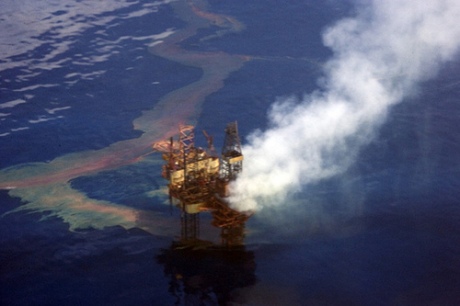
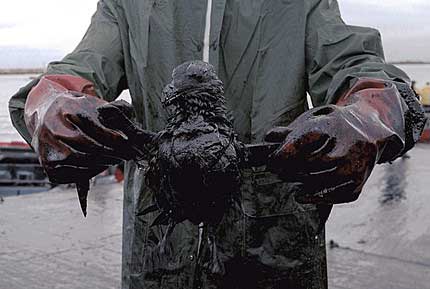


![[OILSPILL]](https://politicalclimate.files.wordpress.com/2010/05/oilspill.gif?w=381&h=905)
